Life Cycle Assessment Software for fashion and footwear
Carbonfact runs granular LCAs for your entire product range. Our platform handles complex footwear, leather, and clothing products with multiple components, variations in color, size and multi-sourcing – calculating detailed footprints for each SKU.
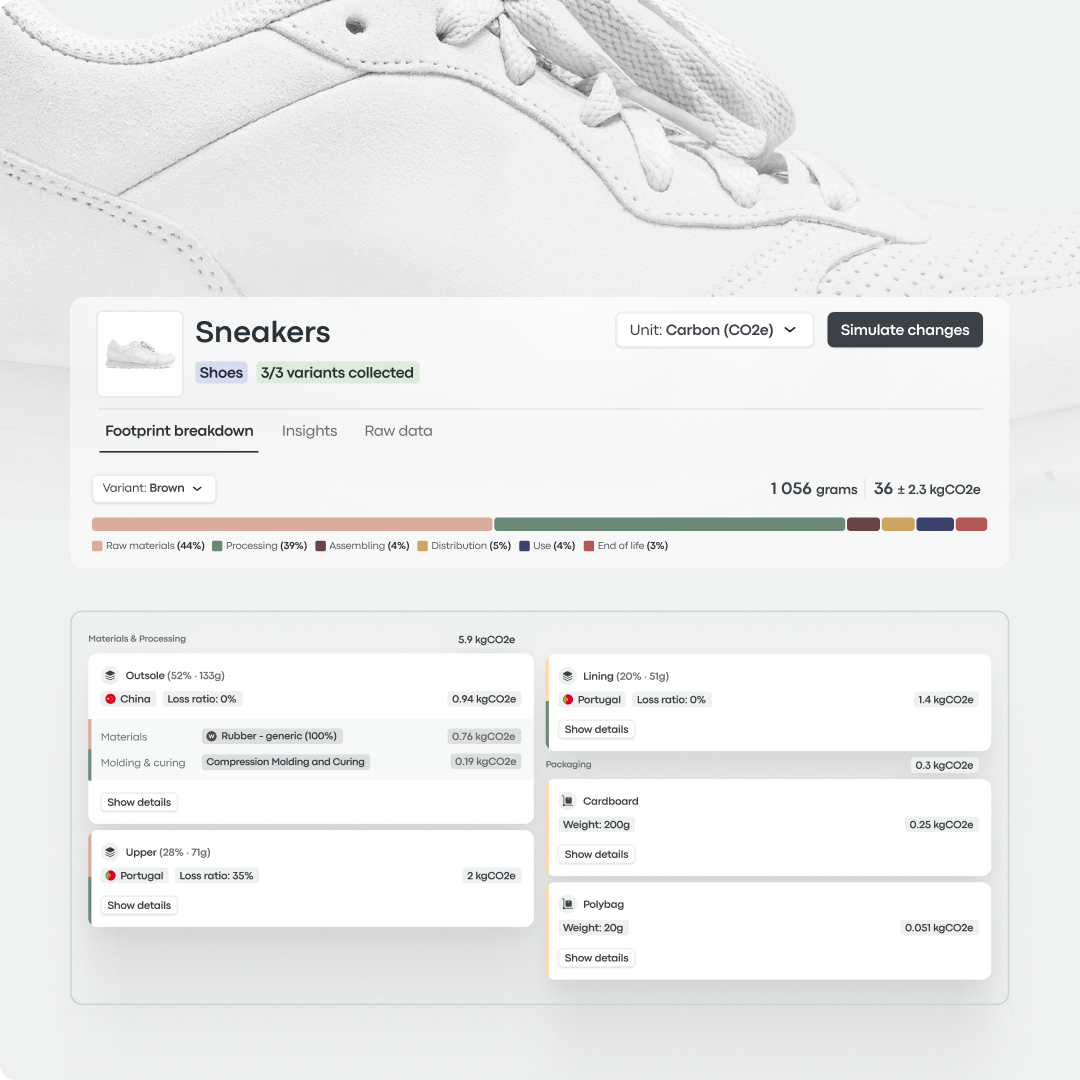
CHOSEN by Hundreds of BRANDS AND SUPPLIERS
Peer-reviewed LCA's for all of your products
Our LCA engine was build for fashion and footwear products and based on the ISO 14040 norm, and the PEFCR meaning you can
expect the highest level of accuracy and transparency when assessing your environmental impact.
Before Carbonfact
- Manual, consultant-led LCAs that are slow and costly
- Time-intensive and tedious data collection
- Limited granularity in footprint calculations
-
Inaccurate due to reliance on secondary data
-
Outdated the moment product data changes
After Carbonfact
- Automated LCAs that scale across entire product catalogs
- Focused data collection and automated data enrichment
- High granularity with detailed process-step analysis
- Actionable thanks to bespoke emission factors
- Live LCA updates as new data is ingested
-
Peer-reviewed, ISO and PEFCR-compliant calculations
Calculates impact at raw material, processing, assembly, transportation, use phase, and end-of-life stages.
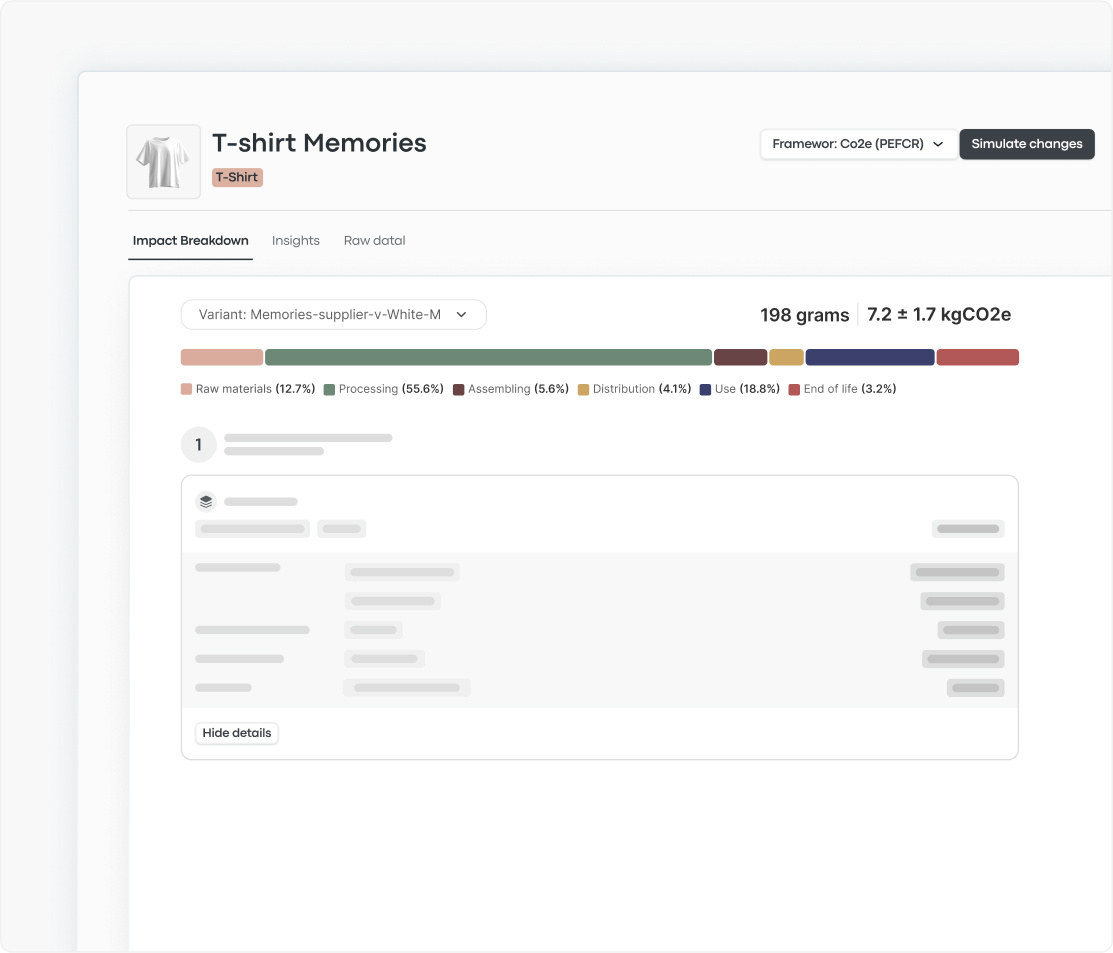
From raw materials to assembly, Carbonfact breaks down environmental impacts at each manufacturing stage to identify supply chain hotspots.
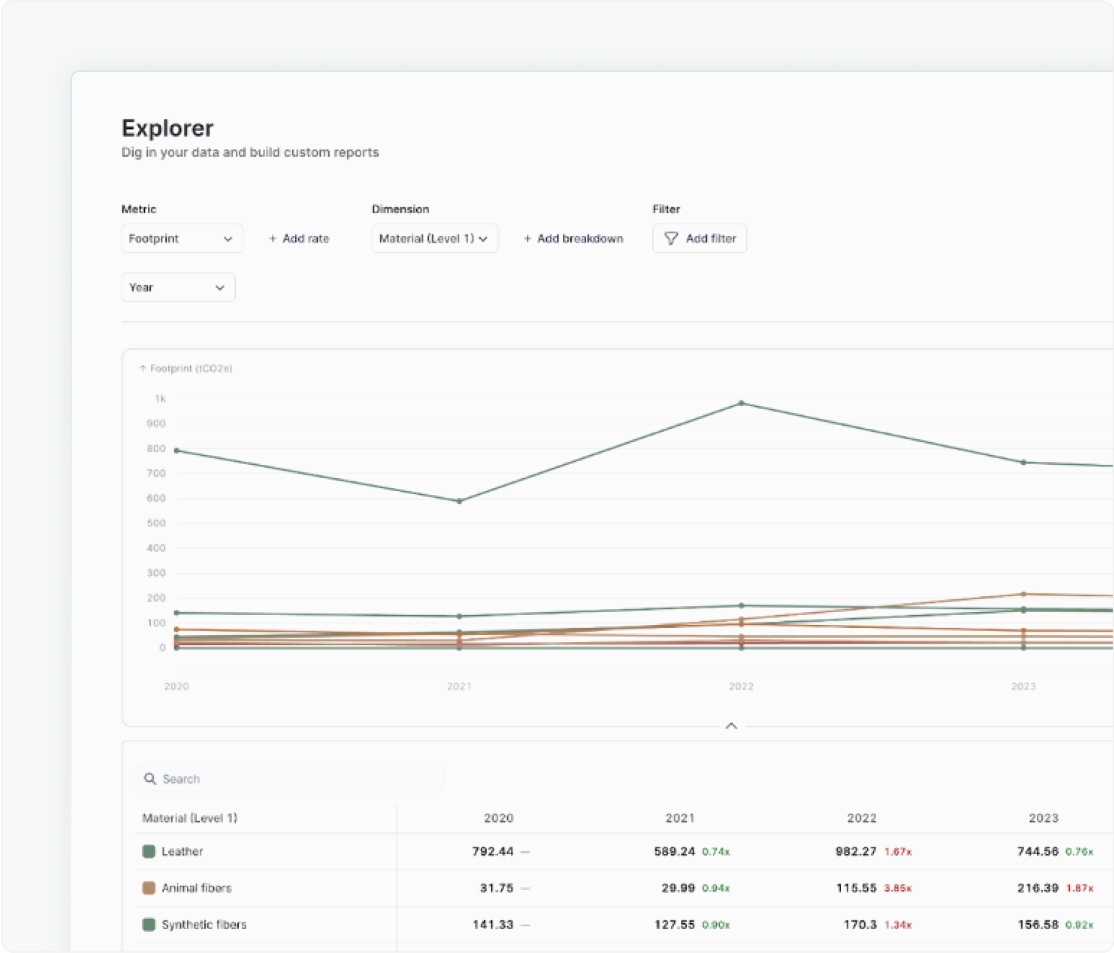
Automatically generates distinct Life Cycle Assessments for every SKU, factoring in size, weight, color, and material variations.
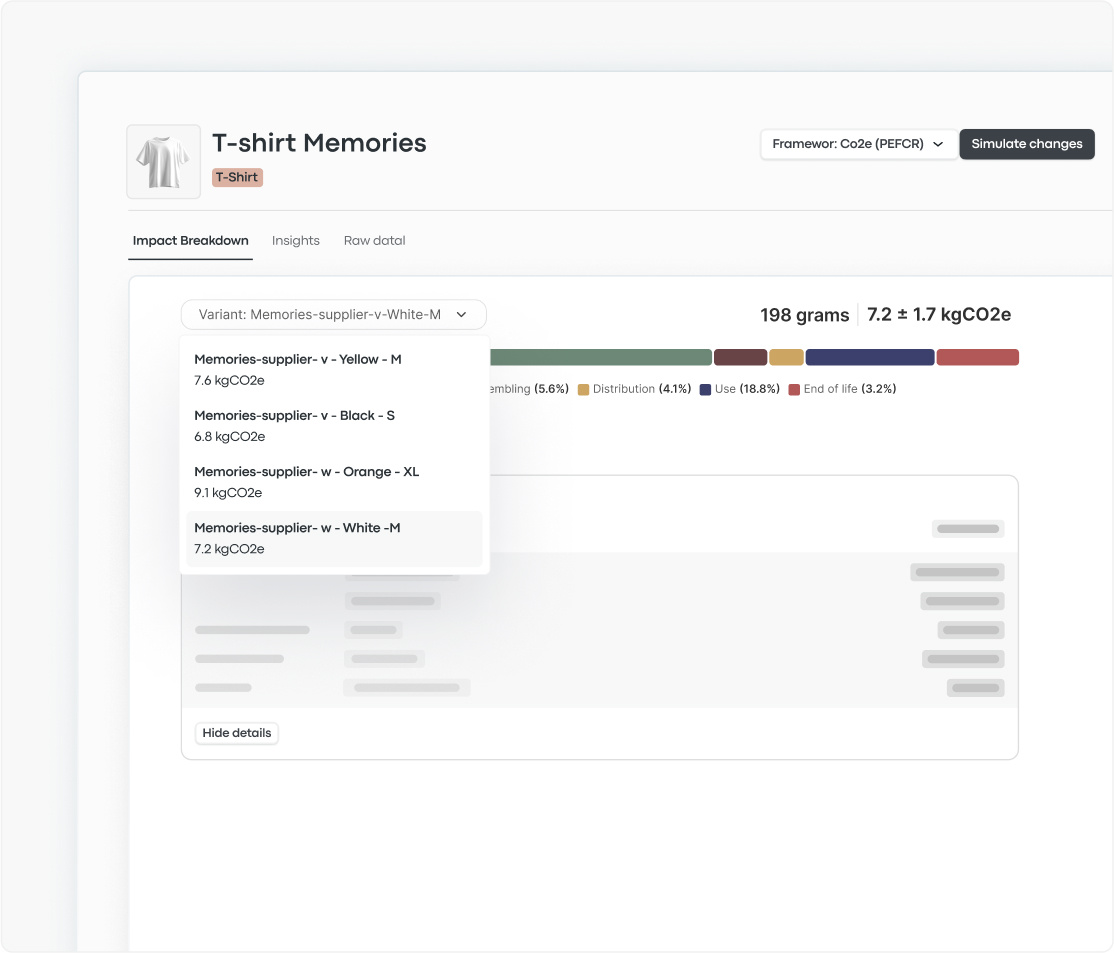
Granular LCAs, even for products with hundreds of components, like footwear..
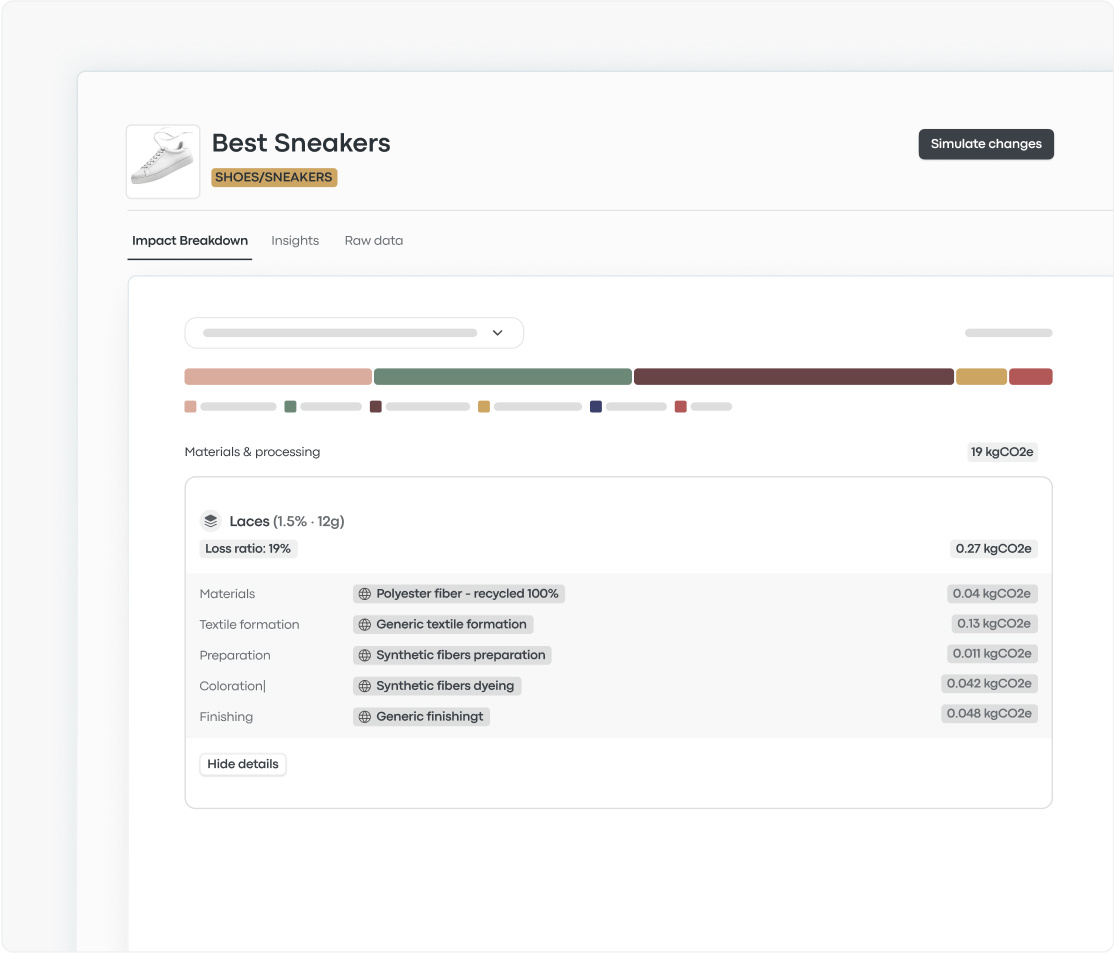
Carbonfact builds bespoke emission factors, created from your own LCAs and tailored to your unique materials, components, or processes.
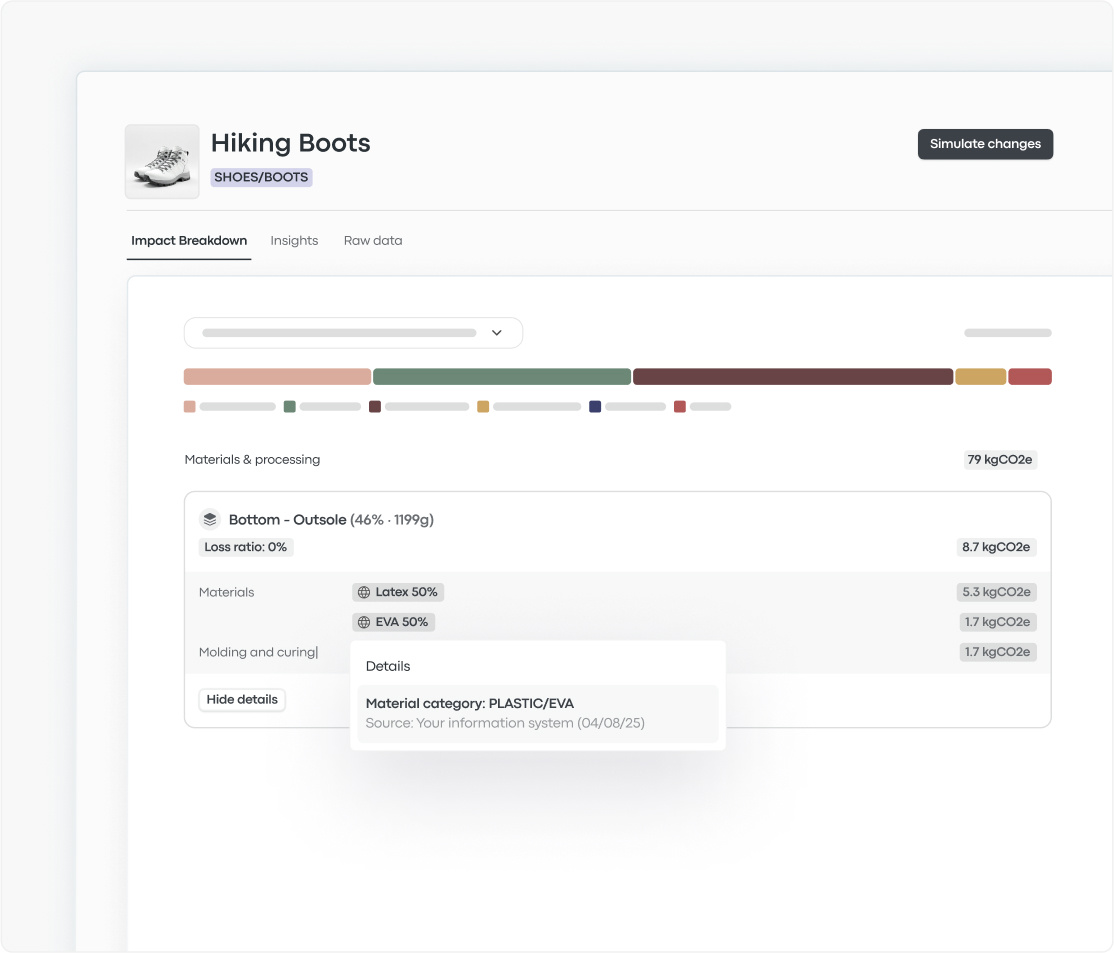
Regionalized emission factors ensure accuracy by adapting to local and supplier energy mixes.
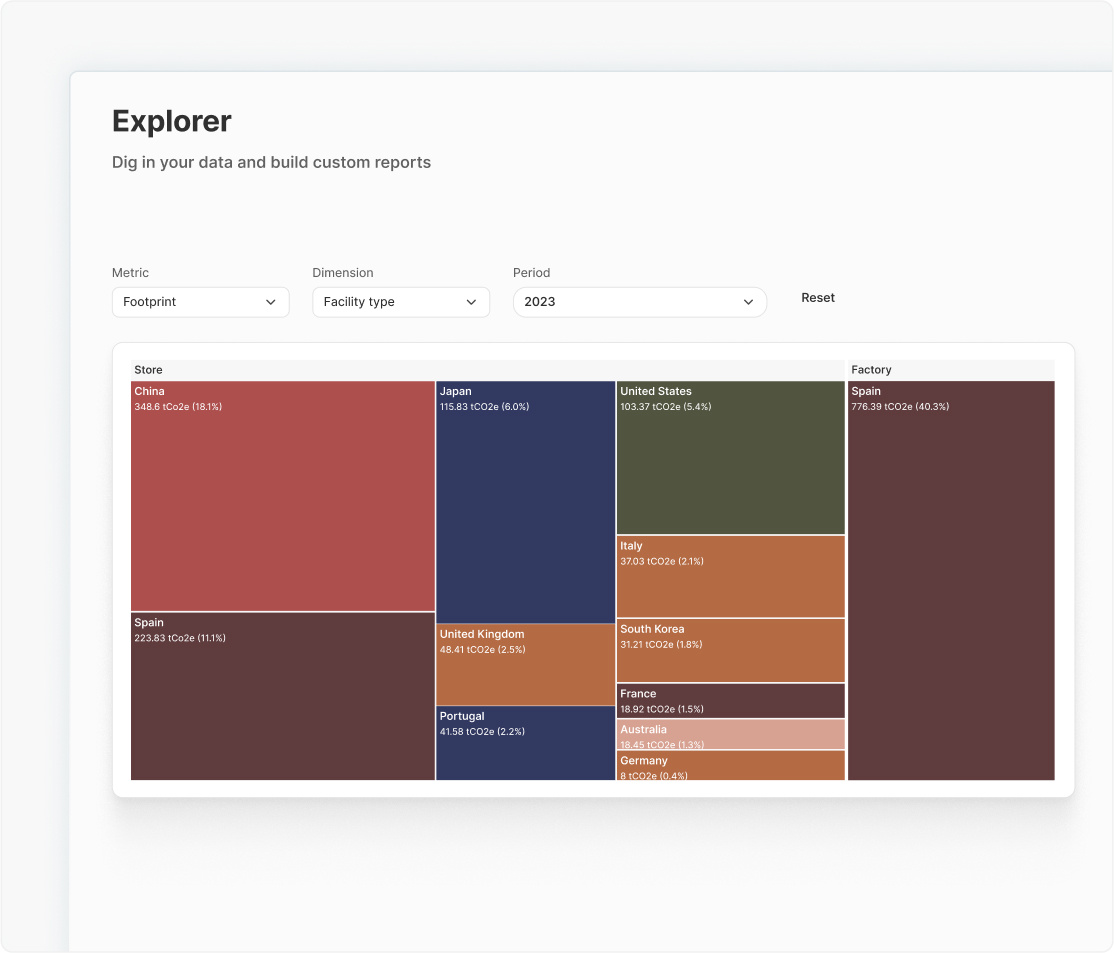






Get a clear and accurate view of your products' environmental footprints
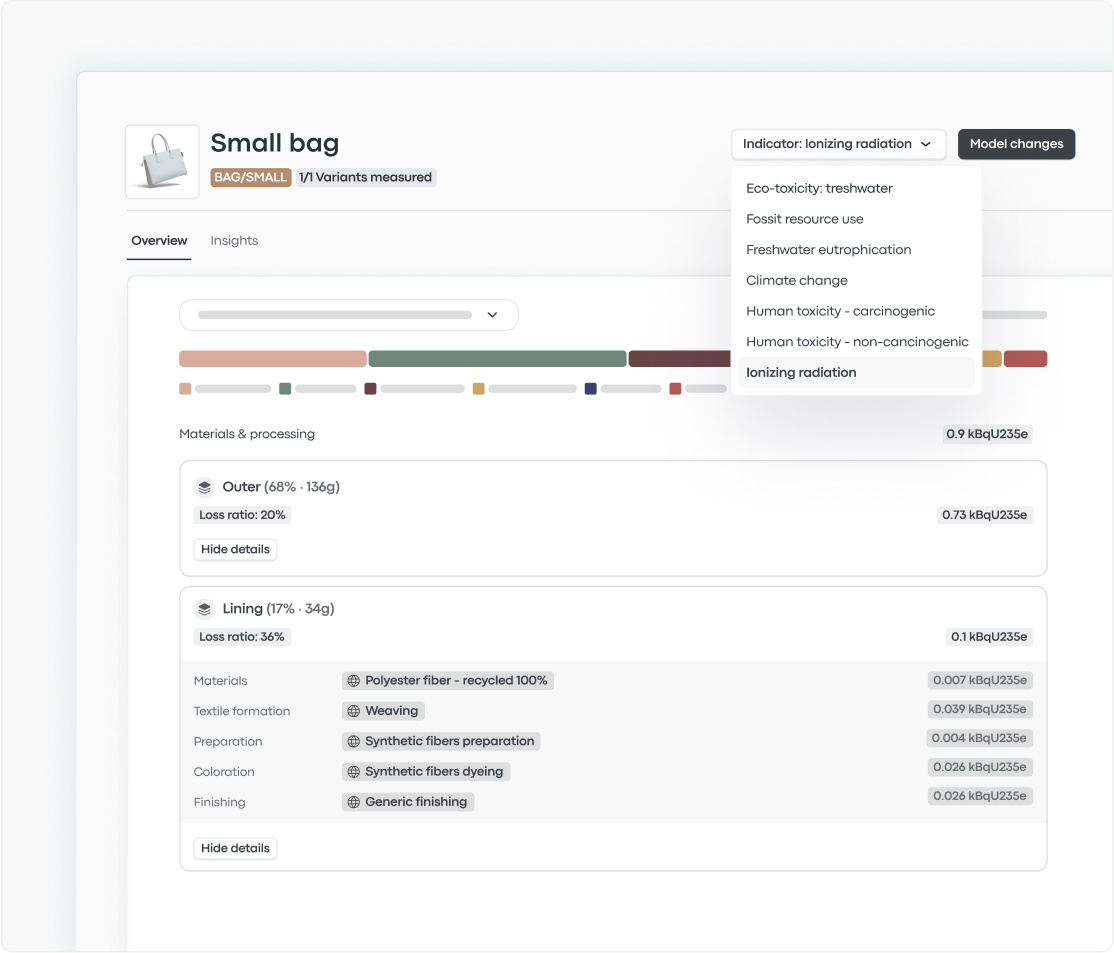
Every single-component product LCA can be broken down into its Environmental Cost to comply with France's Loi AGEC.
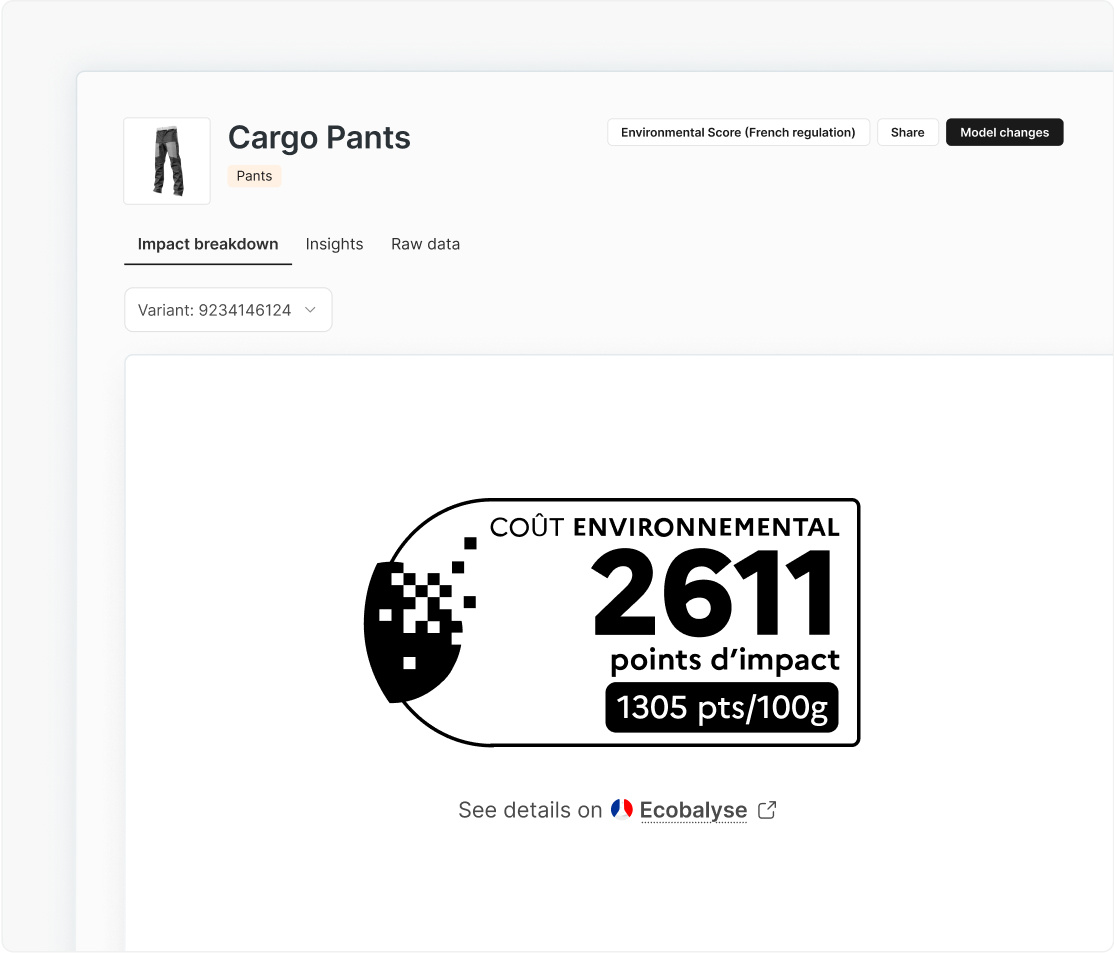
LCAs automatically update when new data is ingested, ensuring ongoing accuracy.
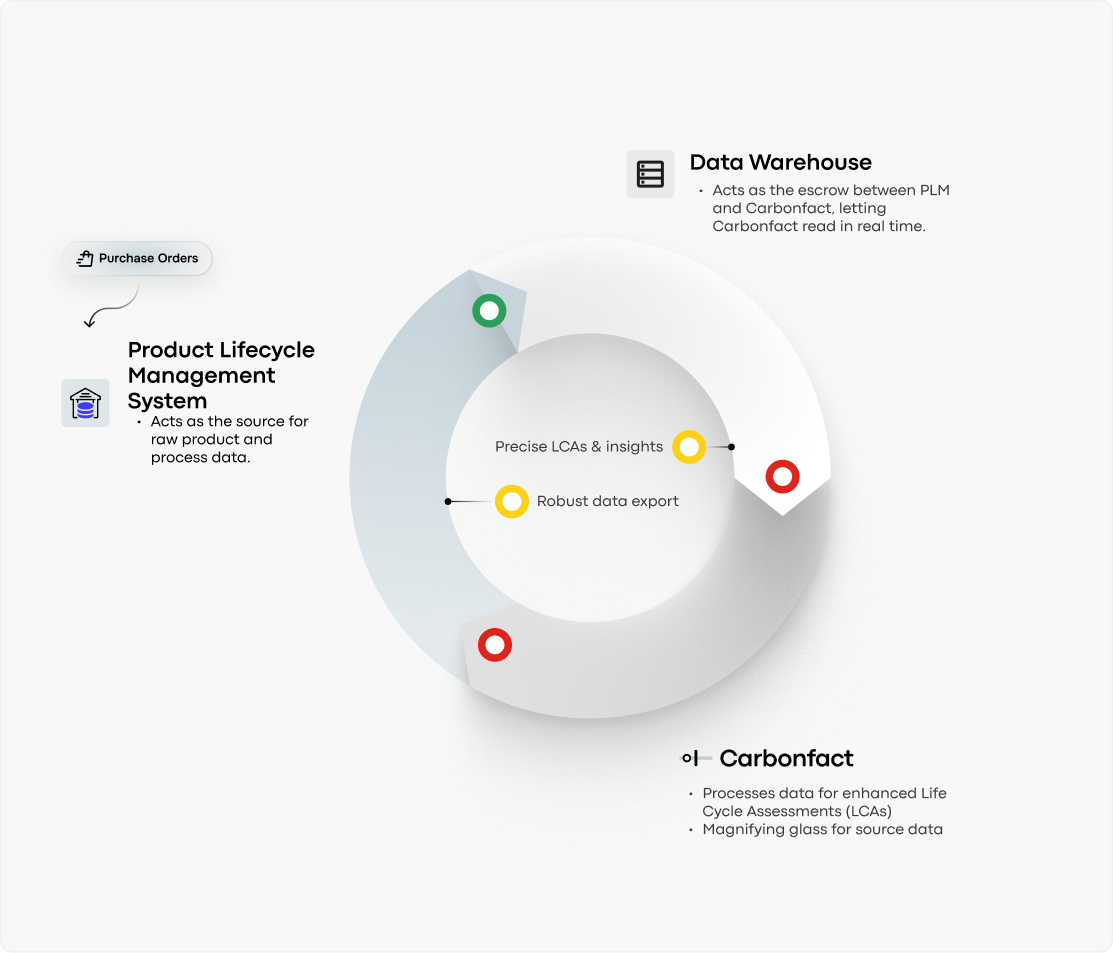
Get a complete view of all factories involved in your product supply chain. Easily edit factory details, including the energy mix, to improve data accuracy and refine emissions calculations.
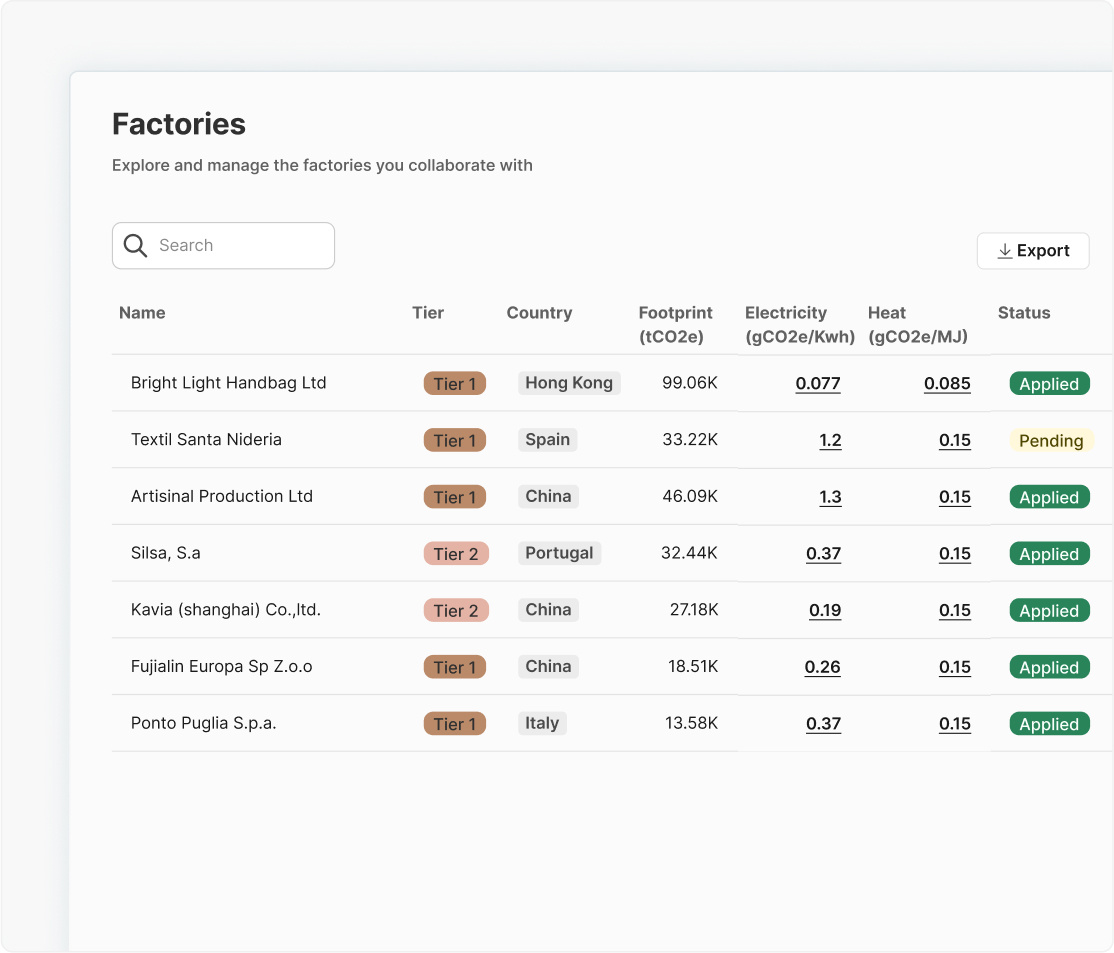
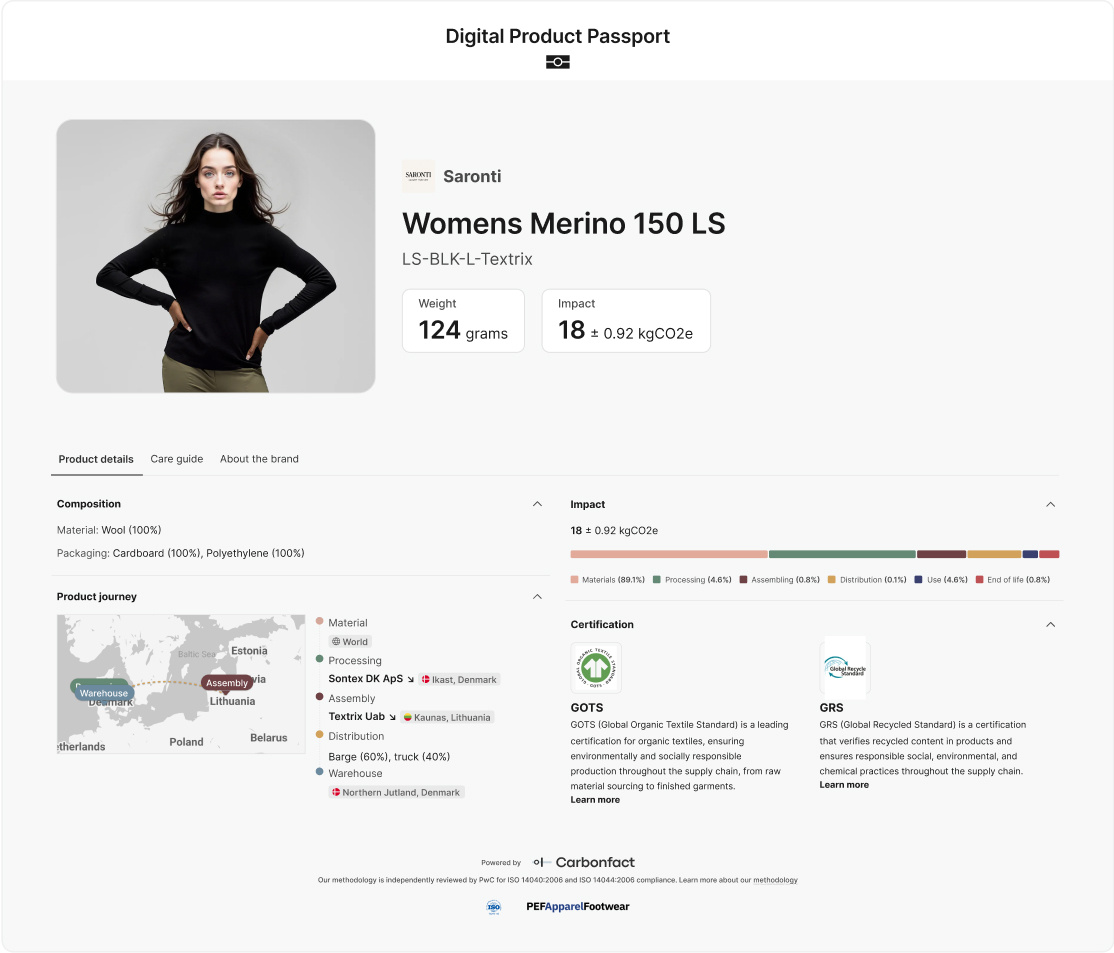





162m
product LCAs performed
150
+
product LCAs performed
100k
+
product LCAs performed

Transparent and sourced access to all emission factors – primary or secondary
ISO 14040 and PEFCR-compliant LCA methodology
PwC peer-reviewed calculation engine for regulatory credibility
Alignment with both PEF and French Ecoscore requirements
What Our Customers Say









How we differentiate

Fashion-Specific
Built on deep industry knowledge, gained from working with hundreds of fashion brands, Carbonfact’s emission factors are tailored to apparel and footwear, ensuring calculations reflect the true complexity of fashion supply chains.

Granularity at Scale
Generate detailed cradle-to-grave LCAs for your entire product catalog at the SKU level, accounting for variations in size, color, and manufacturing processes.

Proven Performance
Our engine processes over 1 million product LCAs weekly, demonstrating unmatched capability to handle large-scale environmental impact calculations.
How Carbonfact works
We’ll ingest all your existing product and supply chain data. Whether it lives in a PLM, ERP, Excel Sheet or a combination thereof, we’ll consolidate and clean it. We’ll do all the heavy lifting too – we can build a custom connector that integrates with your existing systems, automating future data import and creating a live connection to Carbonfact.

Incomplete data? Not a problem – we’ll find and fill any data gaps. Our Data Management solution’s algorithm - trained on extensive primary data sets - automatically fills in missing details like component weights, dtex, and process-level steps.

Once your data is processed, our LCA engine automatically calculates the footprints for each of your products on an SKU level. Directly view the product footprint or break it down by any of the 16 PEFCR indicators. The numbers update whenever new purchase orders are synced via the live data connection.

Carbonfact helps you identify emission hotspots and smartly prioritize your supplier data collection. By providing you with a concrete list of data points to gather from your suppliers, we save your team weeks of time and effort.
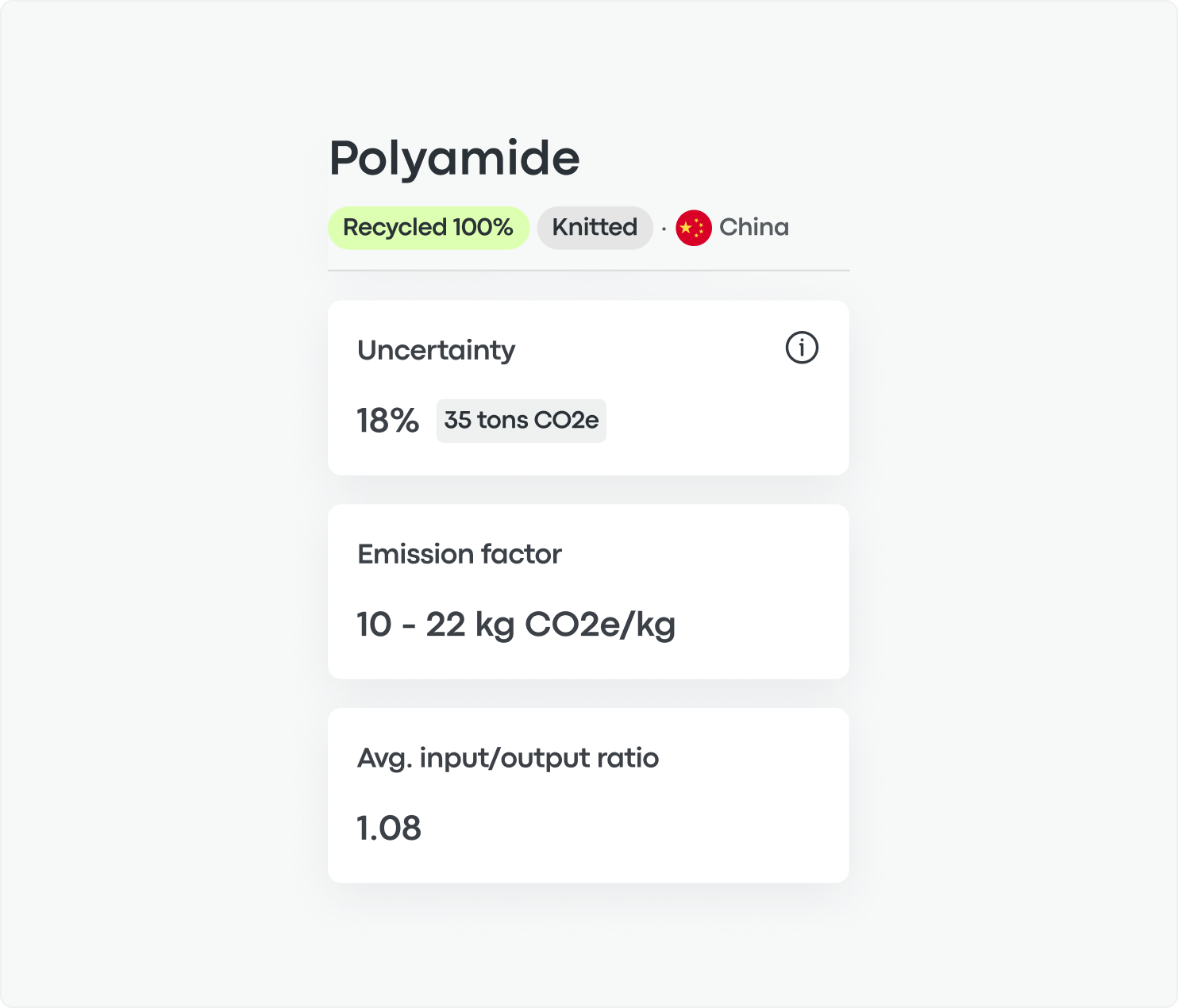
Explore your clean, accurate data with interactive dashboards, perform your yearly GHG Carbon Accounting, and automatically generate reports to stay compliant with CSRD and other regulatory requirements.

Dive into your data with our analytics dashboards and simulate changes using our Eco Design solution. Model changes across components, materials, process steps, and transport on a product and catalog level.







Frequently Asked Questions
How does Carbonfact handle data gaps when primary data is not available?
Carbonfact uses two proprietary features to fill data gaps for apparel and footwear brands:
- Carbonfact heuristics: A database of product descriptive data built from the experience of working with 150+ brands and manufacturers
- Data Augmentation Rules: Based on the client's understanding of their products, materials, and processes, Carbonfact can build client-specific rules to enrich different segments of products, materials, or suppliers.
Additionally, Carbonfact uses recognized databases such as Ecoinvent 3.10, EF 3.1, Ademe (Base Empreinte®) and others. When encountering data gaps, our engine can leverage these databases along with our proprietary technology. For materials or processes where standard databases don't provide sufficient information, Carbonfact's in-house Science team can create custom emission factors based on the latest scientific articles and reports.
Can the platform perform product life-cycle assessments (LCAs)?
Yes, Carbonfact performs comprehensive cradle-to-grave LCAs for entire product catalogs, following ISO 14040 and PEFCR guidelines. Key features include:
- Full life cycle coverage: Calculating impacts at each stage of the product lifecycle, including raw materials, textile formation, preparation, coloration, finishing, assembling, distribution, use, and end-of-life
- Granular process modeling: Modeling various production processes, including different dyeing processes, textile formation techniques, and finishing methods
- SKU-level precision: LCAs are computed at the SKU level, accounting for variations in size, color, and finishing techniques.
Can the platform measure Scope 1, 2, and 3 emissions separately?
Yes, Carbonfact's platform allows full calculation of Scopes 1, 2, and 3. The platform enables activity-based measurement for Scopes 1 and 2, and for several Scope 3 categories including Purchased Goods (3.1, usually 80% of a brand's emissions), Upstream Transportation and Distribution (3.4), Use of Sold Products (3.11), and End of Life Treatment of Sold Products (3.12). For other Scope 3 categories, the platform can use spend-based measurements.
Can users access the source of impact factors and calculations?
Yes, the platform allows users to see the source and date of collection for each data point. For emission factors, users can view minimum and maximum values, database name, factor name, and description. The Science team can provide more detailed information if needed.
Can you support us with the creation of Digital Product Passports (DPP)?
Yes. Carbonfact has its own Digital Product Passport feature, which allows you to publish a DPP for any selected product by simply toggling a button. The DPP is made using the data already present in your platform, and a unique QR code can be downloaded and, for example, printed on product labels.
What environmental indicators can the platform measure?
Carbonfact handles 16 environmental indicators as prescribed by PEFCR methodology, including CO2e, water consumption, land use, energy consumption, waste, and chemicals. It also provides all 24 French Environmental Indicators (French EcoScore). Carbonfact was essentially built under the vision to turn the GHG and PEFCR documents into software. Carbonfact also supports the SBTi climate protocol, including FLAG.
How granular are the emissions measurements?
Carbonfact provides granular emissions measurements at the SKU level, taking into account factors such as weight variation from sizes or finishing techniques on colors. The platform breaks down footprints at the component and process step levels for each product.
How does the platform ensure transparency and auditability of calculations?
Carbonfact uses a Version Control feature that tracks all calculations and methodological changes. A new version can be released when data is updated, or several versions can be batched and then released together, depending on your desired granularity. This approach allows for easy auditing. The platform's engine and procedures are audited annually by PwC to ensure compliance with ISO 14040, PEFCR, and GHG Protocol standards.
How does the platform handle changes/updates in calculations and methodologies?
Carbonfact uses a Version Control feature that tracks all calculations, emission factors, assumptions, and input data. Each time significant progress is made, a new version is released, allowing users to track changes over time. This information is accessible in the Changelog part of the Carbonfact platform. Additionally, there is a Science team and an external consulting team to monitor for regulation and scientific updates, and lead the implementation in the calculation engine.
Can the platform integrate with data visualization tools?
Yes, Carbonfact can integrate with existing dashboard offerings (e.g., Power BI, Tableau) used by businesses through BigQuery. The platform can send data directly to these systems to augment visualization and reporting in external tools.



